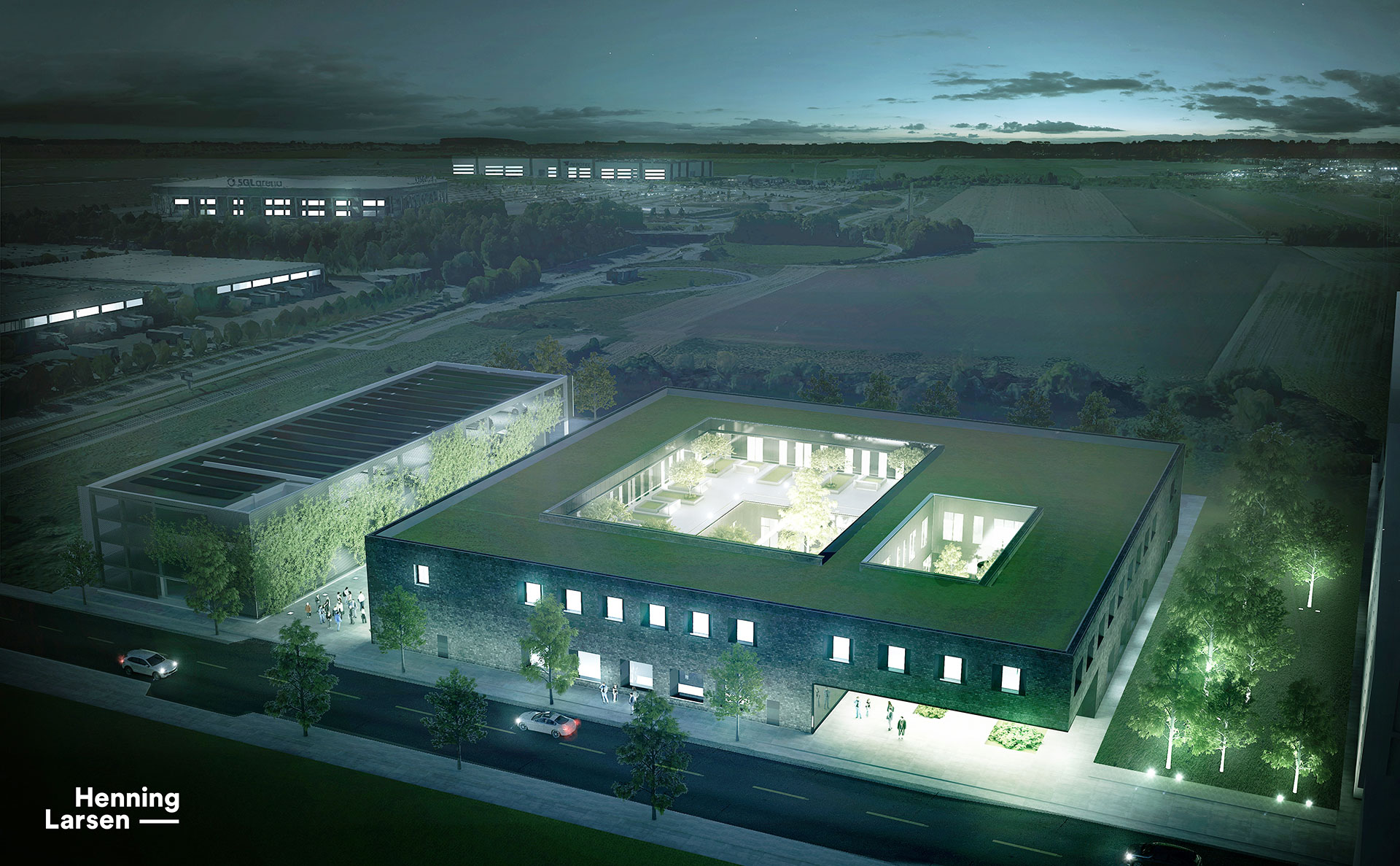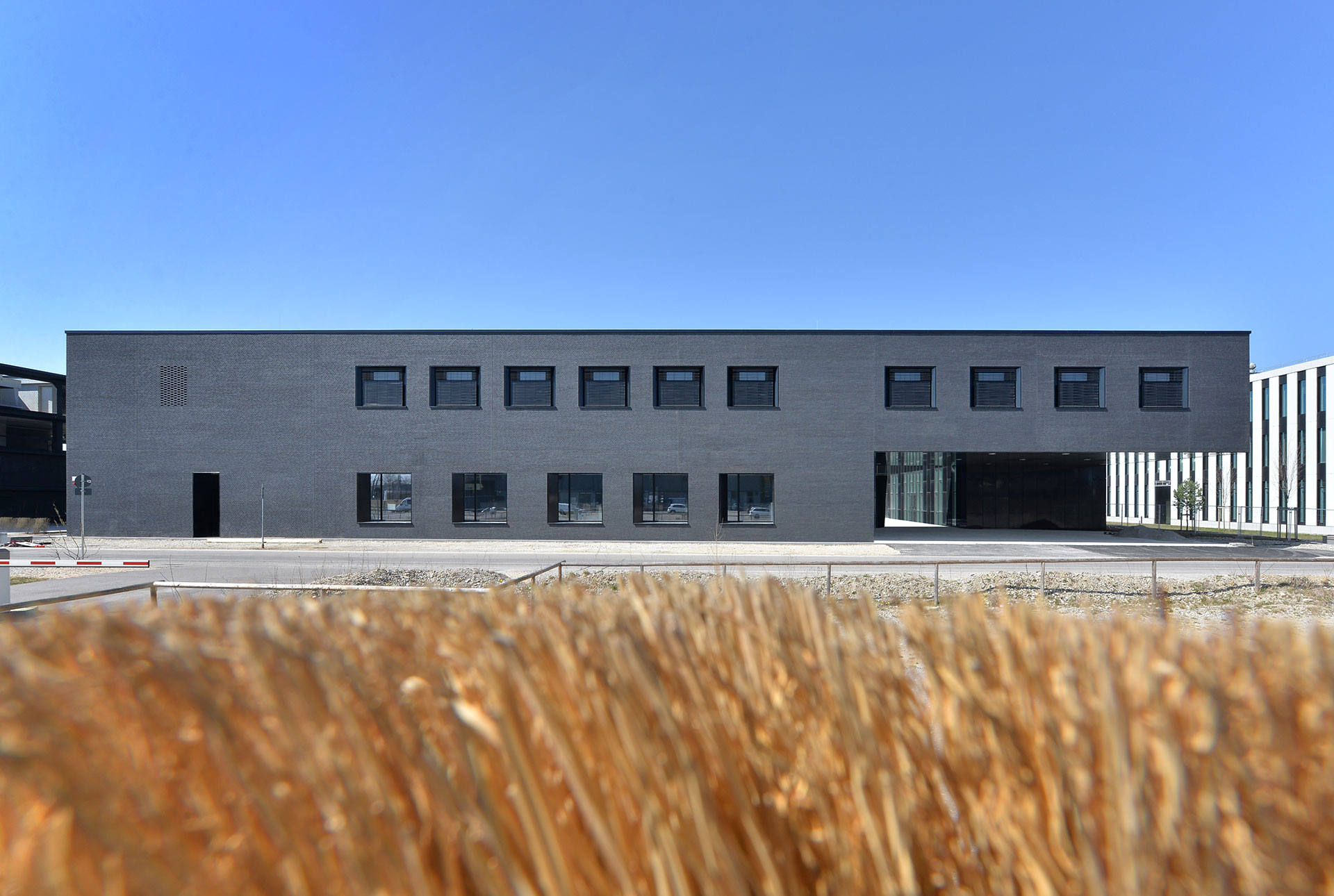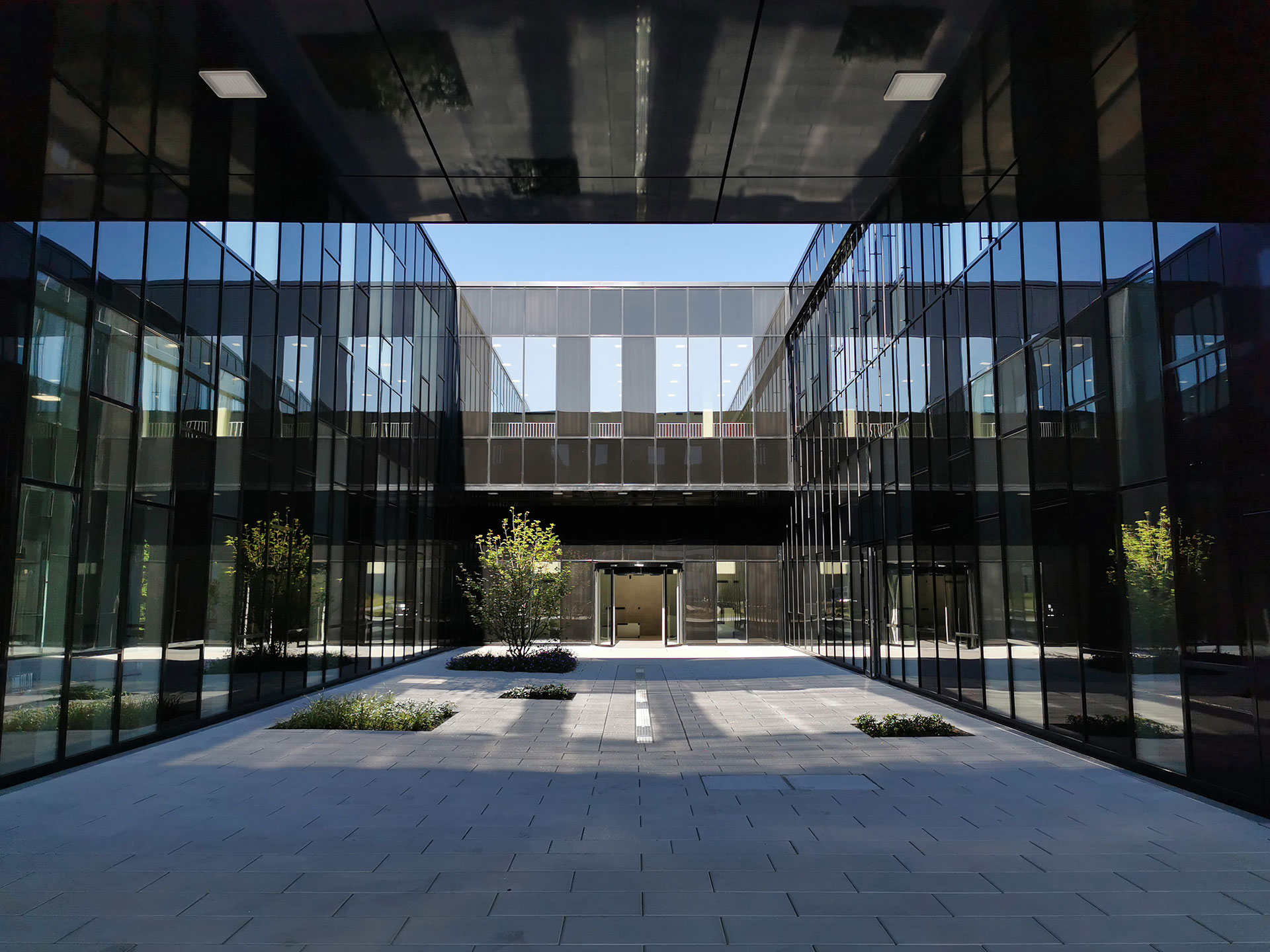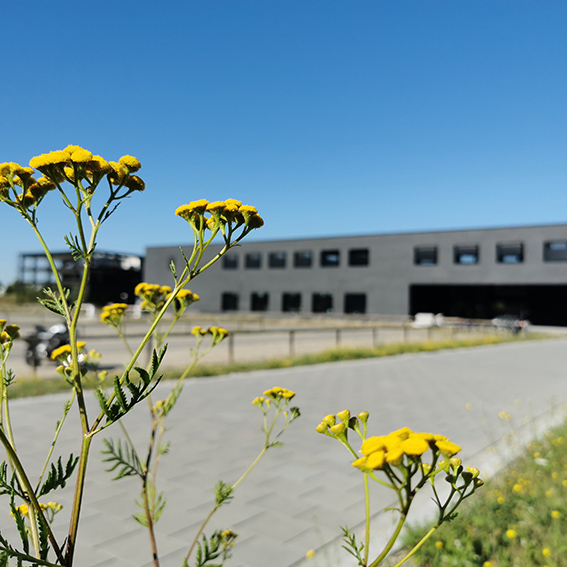All-round sustainability: Fraunhofer IGCV sums up the first months in Augsburg's new »Green Factory«
Since February 2020, research has been conducted at the Fraunhofer Institute for Casting, Composite and Processing Technology IGCV in the Augsburg Innovation Park. It is already the second location of the Fraunhofer IGCV at the Technology Center. As part of the joint project Green Factory Bavaria, the institute supports manufacturing companies in the Bavarian economy to reduce their energy requirements and, at the same time, increase resource efficiency. This is also to be reflected in the new institute building: An innovative and sustainable building concept aims to reflect dialogue, networking, and proximity, flexibility as well as productivity and innovation.
The Fraunhofer IGCV is growing – from three project groups to an independent institute with a total of about 160 employees. An essential step for further growth: the local consolidation of both, the administration and the locations of the scientific field of processing technology, which were previously scattered throughout Augsburg. They are now in one building. »As a team under one roof, we are opening up new fields of research and application in the fields of materials, production, and products for castings and fiber composites«, says the managing director of the institute, Prof. Dr.-Ing. Klaus Drechsler. »And that in all areas of the company hierarchies.«
The compact complex consists of a two-story institute building and a four-story energy/parking building - and is designed in such a way that it can later be extended by up to two additional buildings. The light-flooded technical center houses the process chain for research, demonstration, and teaching purposes. Researchers will be working here in the future on solutions for resource-efficient production and processing in the Industrie 4.0 environment.
Around 100 people from administration and research have moved into the premises, and up to 160 workstations are available for student assistants and other employees. With the move into the building, the Fraunhofer IGCV will be able to live up to its newly acquired status as an institute (Fraunhofer research institution until the end of 2019) - and above all live the kind of sustainability on-site that is also implemented in research on a daily basis: Right from the start, the new institute building was designed for energy-efficient and ecological operation.
For the Fraunhofer IGCV, this is just the beginning - and the conclusion of a project that has been a heart project for Prof. Dr.-Ing. Gunther Reinhart for almost ten years. Since the initial idea of the »Green Factory« was first conceived in 2012, he and his head of department and Professor of Production Informatics at the University of Augsburg Johannes Schilp have been instrumental in driving the realization of the construction project forward with great personal commitment. The Processing Technology Science Department, which reports to him, is ideally positioned for the future with new possibilities. »Now I can retire with peace of mind«, smiles the head of the institute, who will be working at the Fraunhofer IGCV until fall 2020.
Green inner values: well-thought-out architectural concept
The building ensemble consists of the building blocks institute building and energy/parking building. The compact cubature of the institute building offers daylight everywhere and many external references thanks to two inner courtyards and the open roof terrace.
The adjacent energy/parking building to the south combines functions and technical areas with a parking garage. The technical rooms serve the hall via a media channel, the recooling plant, and photovoltaic elements - designed for operating the building - are arranged on the roof, which follows the photovoltaic elements' shape. The facade is planted all around. Modern, clean lines also dominate the institute building. The materiality of the clinker facade conveys the industrial idea. The inward-facing mullion-transom facades are smooth in contrast to the rough outer shell. The roofs will be extensively greened to increase rain retention and improve the microclimate.
The sustainable concept also runs through the interior of the »Green Factory«. Thanks to the building's modular design, offices and the technical center can be used extremely flexibly. The hall and office areas are connected by a long, light-flooded central corridor, the so-called »Spine«, which extends over both floors. If the building complex is extended, it can be converted into a bridge, thus connecting the buildings. The buildings are illuminated by LEDs and heated by district heating. The concrete core activation of ceilings in the office area provides a comfortable indoor climate. This, combined with a heat pump, uses groundwater to support basic heating and cooling. The compression chiller for cold water production provides active cooling. The waste heat is reused via the double condenser of the chiller.
First conclusion: good start into a sustainable future
After almost half a year in the new building, the institute management draws the first conclusion. »Despite the – Corona-induced – extraordinary circumstances, we were able to resume research operations according to plan after the move and to continue our industrial projects«, says Prof. Drechsler. The comfort and functionality, as well as the sustainability and energy balance of the new location, exactly met the expectations. »Our goal of bringing buildings and production processes into direct interaction with each other was a complete success – the perfect basis on which new industrial concepts for a target-oriented energy turnaround can be developed.«
Promotion by the Free State of Bavaria
The land on which the new building is located belongs to the Free State of Bavaria and has been made available under a free hereditary lease. The construction project was financed to the tune of 28 million euros by three sponsors: the European Regional Development Fund (ERDF), the Free State of Bavaria via the Green Factory Bavaria project, and the Federal Ministry of Education and Research. The aim is to support manufacturing companies in the Bavarian economy to reduce energy requirements and increase resource efficiency in modern production processes.
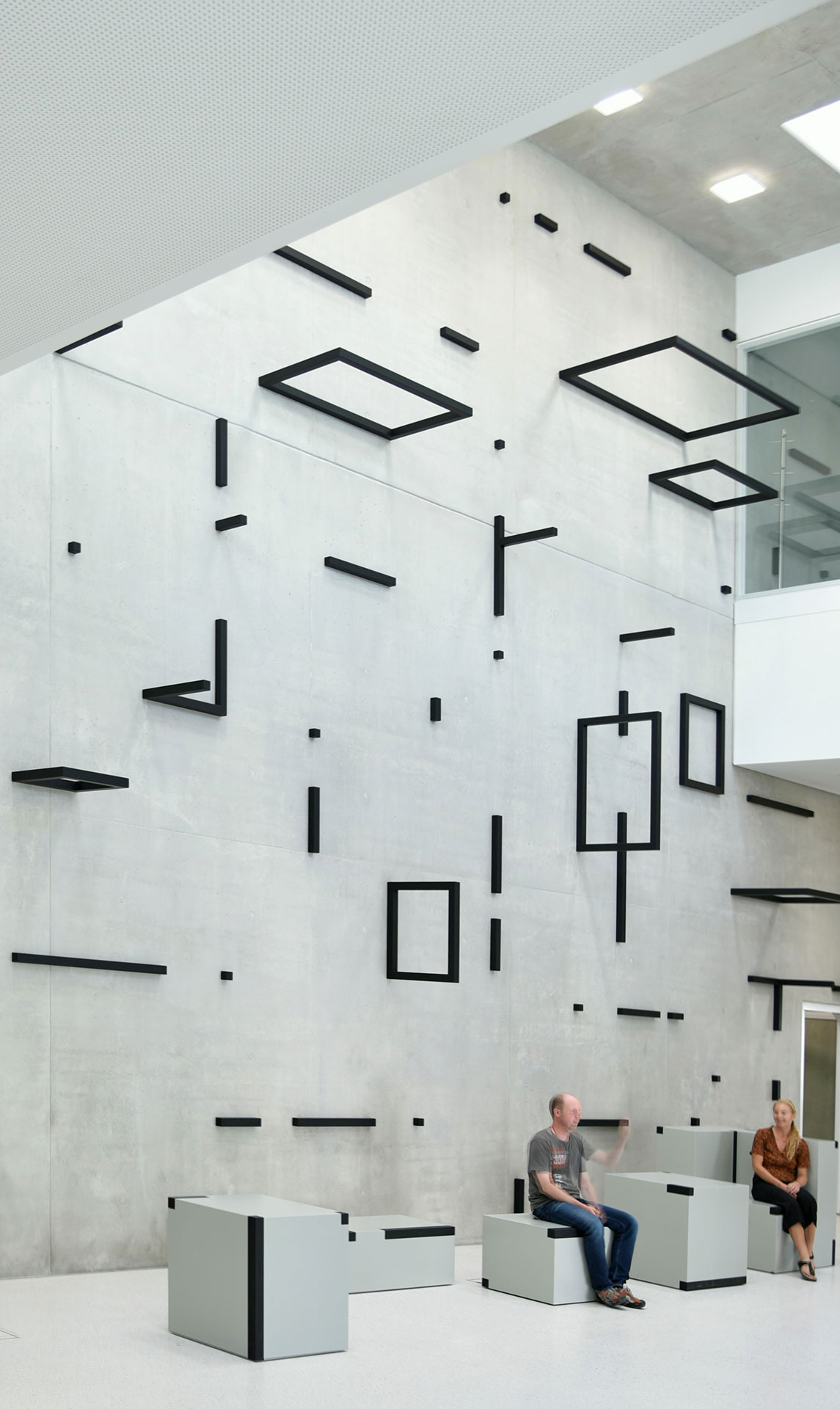
Art on buildings: a place of encounter and exchange
A wall installation by Ester Stocker welcomes visitors to the new Fraunhofer IGCV building. The artist treats the three-dimensional space like a pictorial space. The guest can take the mental experience of entering a picture to the extreme: by taking a seat, lingering, getting up again, and through movement experiencing the space anew again and again.
Esther Stocker is an Italian painter and installation artist (1974, Schlanders). She studied at the Academy of Fine Arts Vienna from 1994 to 1999.
»I need the grid or order«, says the artist, »in order to be able to describe a deviation from it in the first place. Systemlessness can only be described by systems, and it is part of the system. Behind chaos, there is always a kind of order.«
»Our goal of bringing buildings and production processes into direct interaction has been a complete success – the perfect basis on which new industrial concepts for a targeted energy turnaround can be developed.«
Last modified:
